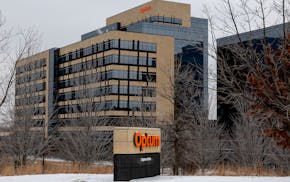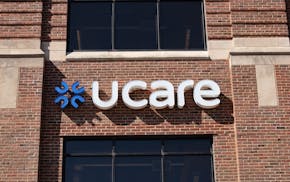Several readers responded to last week's column about how Windows 11 automatically encrypts PC data without telling consumers (see tinyurl.com/yv2w9fy4).
Those who responded agreed with my suggestion that readers turn off this automatic encryption, which could cause data to be lost if a PC failed with its information locked in.
For example, a repair shop would be unable to copy encrypted data from a damaged PC unless the owner knew where to find an "encryption key." Microsoft has so far done a poor job explaining the existence and location of this key.
But some readers pointed out that turning off encryption is sometimes easier said than done. That's because the two versions of Windows 11 most used by consumers — Home and Pro — turn off encryption differently. Last week's column explained how to turn off encryption on Windows 11 Home, but it turns out that those directions don't work for Windows 11 Pro.
Why is encryption different on the Pro and Home versions? More than 20 years ago, Microsoft began offering a form of voluntary encryption on some versions of Windows. Since then, security on the Home and Pro versions has evolved separately. Today, Windows 11 Home encrypts data using "device encryption" and Windows 11 Pro typically uses "BitLocker." BitLocker uses the more elaborate encryption method and is more complicated to turn off.
Here's how to turn off BitLocker on Windows 11 Pro: Open the Settings app (press the Windows and letter "I" keys simultaneously.) Click "System" on the left, then "Storage" on the right. Scroll to the bottom of the resulting menu and click "Advanced storage settings." In the next menu, click "Disks & volumes."
You'll then see a list of the storage "drives" on your PC. In fact, you'll see more drives than you thought you had, because a single hard drive or SSD (a chip-based substitute for a hard drive) is typically "partitioned" into separate segments that each has its own drive name. Some or all of these "drives" may be encrypted, and each will need to have its encryption turned off separately.
Check the list under each "drive" to see if it is "BitLocker encrypted." If it is, click "Properties" under the list. In the next menu, scroll to the bottom and click "Turn off BitLocker." In the next menu, find the same drive, and on the right click "Turn off BitLocker." You will get a warning message that says it may take a long time to "decrypt" the drive. Click "Turn off BitLocker" again. BitLocker will be disabled for that "drive" (which means its data won't be automatically encrypted in the future) and the drive will be unencrypted. Follow the same steps for any other encrypted "drive."
Q: I have an older HP DeskJet All-in-One printer that still works great. But the HP software that ran the printer no longer works because it was based on the now-discontinued Adobe Flash program. What can I do?
KATHLEEN KRAMER, Midlothian, Va.
A: The HP Solution Center, a management program for HP printers, was discontinued because it depended heavily on the Adobe Flash animation program that Adobe dropped earlier this year. But HP has suggested several workarounds that will allow you to keep an older printer working, such as using the Windows built-in print driver software, or downloading the free "HP Scan and Capture" app (see tinyurl.com/a3d3ccxb) (For more details, see tinyurl.com/yjx5pa8d).
E-mail tech questions to steve.j.alexander@gmail.com or write to Tech Q&A, 650 3rd Av. S., Suite #1300, Minneapolis, MN 55488. Include name, city and telephone number.
New type of electric engine powering Graco's latest round of innovation

DOJ urges judge to keep alive whistleblower lawsuit against UnitedHealth Group
![Gas was $2.39 at the BP gas station ay 46th Street at Lyndale in South Minneapolis. ] GLEN STUBBE * gstubbe@startribune.com Friday September 4, 2015 P](https://arc.stimg.co/startribunemedia/4U372WPXFGGQGQHPL2CTC4SFUY.jpg?h=91&w=145&fit=crop&bg=999&crop=faces)
What Minnesotans need to know about Trump's new tariffs
UnitedHealth Group sues tech giant Broadcom over 'exorbitant' price hikes

